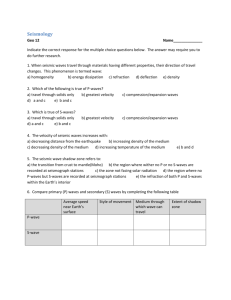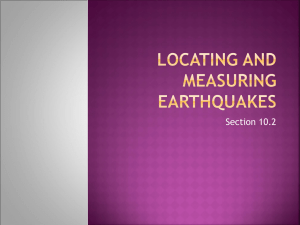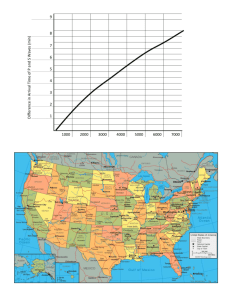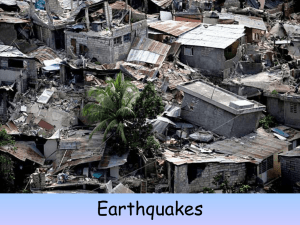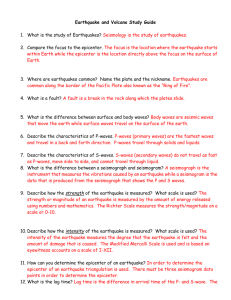Moonquakes Student Handouts Purpose: To use the P and S
advertisement
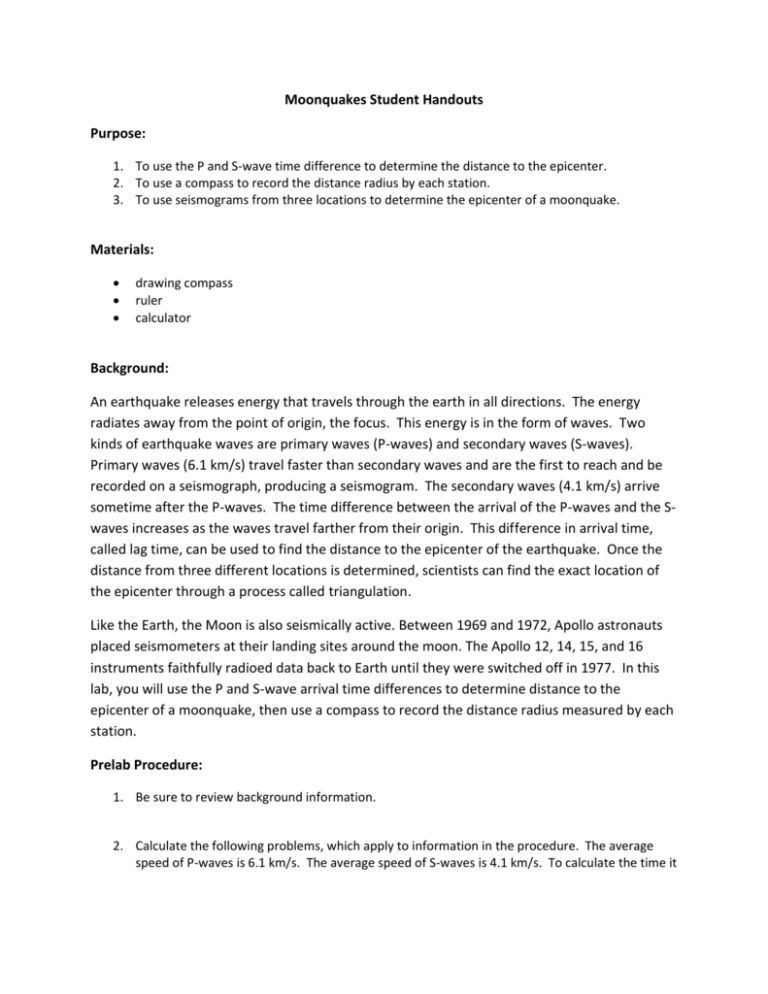
Moonquakes Student Handouts Purpose: 1. To use the P and S-wave time difference to determine the distance to the epicenter. 2. To use a compass to record the distance radius by each station. 3. To use seismograms from three locations to determine the epicenter of a moonquake. Materials: drawing compass ruler calculator Background: An earthquake releases energy that travels through the earth in all directions. The energy radiates away from the point of origin, the focus. This energy is in the form of waves. Two kinds of earthquake waves are primary waves (P-waves) and secondary waves (S-waves). Primary waves (6.1 km/s) travel faster than secondary waves and are the first to reach and be recorded on a seismograph, producing a seismogram. The secondary waves (4.1 km/s) arrive sometime after the P-waves. The time difference between the arrival of the P-waves and the Swaves increases as the waves travel farther from their origin. This difference in arrival time, called lag time, can be used to find the distance to the epicenter of the earthquake. Once the distance from three different locations is determined, scientists can find the exact location of the epicenter through a process called triangulation. Like the Earth, the Moon is also seismically active. Between 1969 and 1972, Apollo astronauts placed seismometers at their landing sites around the moon. The Apollo 12, 14, 15, and 16 instruments faithfully radioed data back to Earth until they were switched off in 1977. In this lab, you will use the P and S-wave arrival time differences to determine distance to the epicenter of a moonquake, then use a compass to record the distance radius measured by each station. Prelab Procedure: 1. Be sure to review background information. 2. Calculate the following problems, which apply to information in the procedure. The average speed of P-waves is 6.1 km/s. The average speed of S-waves is 4.1 km/s. To calculate the time it takes seismic waves to travel a given distance, divide that distance by the average speed of each wave. a. How long would it take P-waves to travel 100 km? How long would it take them to travel 200 km? b. How long would it take S-waves to travel 100 km? How long would it take them to travel 200 km? c. What is the lag time between the arrival of P-waves and S-waves over a distance of 100 km? What is the lag time for a distance of 200 km? Procedure: 1. Figures 1, 2, and 3 show seismograph records made at three locations following a moonquake. Note that the first set of deviations at each location indicates the arrival of P-waves, and the second set of deviations indicates the arrival of S-waves. Use the ties given to find the lag time between the P-waves and the S-waves for each location. Record this information in a data table with columns for the location, lag time, and distance to the epicenter. 2. Find the distance from each location to the epicenter of the moonquake. To calculate these distances, use the lag times you found in Step 1, information from the prelab procedures, and the following formula: distance = measured lag time (s) X 100 km lag time for 100 km (s) 3. Locate the map in Figure 4, which shows the three seismograph locations with a scale in kilometers. Using the scale, adjust the compass so that the radius of the circle with Tycho at the center is equal to the distance from the epicenter of the moonquake as calculated in Step 2. Put the point of the compass on Tycho. Draw a circle on your map. 4. Repeat Step 3 for Surveyor 7 and then for Wilhelm. The epicenter of the moonquake is located near the point at which the three circles intersect.

